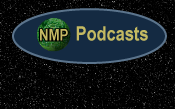Return to Current Site

While an emerging technology may seem promising and likely to provide the technical capabilities NASA requires, it may also present an unacceptable risk to any exploration mission using it for the first time in space. The goal of NMP is to reduce the risks to, as well as the costs of, future NASA space science missions.

|
|
NMP selects breakthrough technologies that will be of the greatest use to future missions, and which are perceived to be risky to the first user. |
To meet its goals, the NMP identifies and selects leading-edge technologies that will increase the capability of future Science Mission Directorate missions. To identify the crucial technologies required, technologists are guided by the roadmaps of NASA's three mission areas: Sun-Earth System, Solar System, and Universe. The technical requirements outlined in these roadmaps are matched with technologies emerging from the national "pipeline" of current technology-development efforts. Once selected, these untried technologies are demonstrated on NMP in-space validation missions.
Ion propulsion, for instance, is a technology that was in the development stage for several decades. It was considered too risky to use, but promised a revolution in space propulsion if it did work. So, in 1998 NMP conducted its first technology validation mission——Deep Space 1 (DS1), with a xenon ion drive engine and several other advanced, high-risk technologies:
- solar electric propulsion
- autonomous optical navigation
- beacon monitor operations
- solar concentrator array
- telecommunications devices
- microelectronics and spacecraft structure
- autonomous operations systems
- miniature camera and imaging spectrometer
- miniature ion and electron spectrometer
Following its launch, three of DS1's technologies had to work within a few minutes of when the spacecraft separated from the rocket that took it into space. Unlike most interplanetary missions, which have many months of coasting with minimal activity before reaching their destinations, DS1 immediately began a very intensive period of demanding experiments to characterize the 12 technologies on board.
And, while the primary focus of NMP's projects is to test advanced instruments, spacecraft systems and subsystems, and mission concepts in spaceflight, they may also return science data as a byproduct of their testing. DS1 is a good example. After the testing period, a bonus mission was conducted during which the revolutionary xenon ion engine propelled the DS1 spacecraft through space to a successful encounter with Comet Borrelly—— returning the best images and other science data ever from a comet!
Through NMP, advanced technologies are developed at a lower cost and in less time than has been done in the past. The Program's space-flight validation advances the readiness levels of these emerging technologies, so that they may be applied to operational science missions sooner. In this way, scientific information through space exploration is gained sooner.
Note: Technologists wishing to participate in an NMP flight validation opportunity, should proceed to the JOIN NMP section and learn how to "Get Involved."







